Commons Update
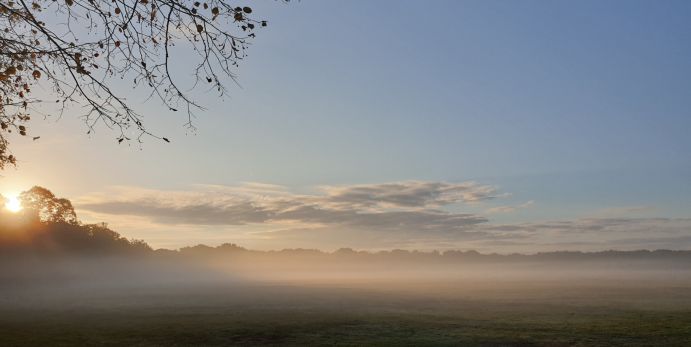
Since the update published in July, much of the activity that has taken place on the Commons has continued to be shaped by COVID-19. For most of the summer period, the issues of litter, fly-tips and emptying dog waste bins has been part of the daily routine for many of the Commons staff.
With both litter and dog waste bins often needing to be emptied twice a day, available time to carry out other duties has been scarce.
The decision was therefore taken in August to install additional bins at both Rushmere and at Putney Lower Common which are emptied by contractors. This has helped ease the pressure on staff and allowed the Keepers to get back to their core work with visitors, and enabled the Maintenance Team to undertake a number of important conservation tasks in addition to the routine tasks such as tree safety work, mowing, vehicle repairs and path repairs.
But first some fantastic news….
London In Bloom – Gold for Wimbledon Common and Putney Lower Common!
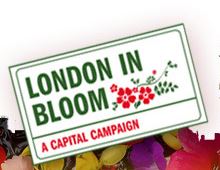 We are delighted that for the second year in a row, both Wimbledon Common and Putney Lower Common have been awarded Gold in the London in Bloom competition.
We are delighted that for the second year in a row, both Wimbledon Common and Putney Lower Common have been awarded Gold in the London in Bloom competition.
As a result of COVID-19, this year’s competition was run slightly differently with all entries being judged by means of a written report. Although not the most ideal way to judge the management of open spaces, nevertheless, the reports provided by our Conservation and Engagement Officer, Peter Haldane, were enough to achieve the accolades.
Peter commented “The Gold Award is presented to entries who have demonstrated an exceptionally high standard throughout the management of their site, showing a consistent approach which demonstrates both best practice and sustainable effort. It Is a credit to our staff and their hard work that we have once again achieved these prestigious awards."
Beverley Brook
Litter picking in the Brook - Given the nature of the water down the Beverley Brook – when it rains it “flash” floods very quickly - and the fact that the Wimbledon Common section of the Brook is downstream from a very busy urban/suburban environment, litter is unfortunately an ongoing issue. Over the past three months, there have been four litter picking sessions involving Commons’ staff and during each visit a huge assortment of rubbish was removed. Whilst items such as bottles and drinks cans are easy to remove, on all occasions it has been items made of polystyrene that have continued to be the most difficult to collect from the water.
Meanwhile, Richmond Park are delighted with how clean their section of the Brook is these days…..
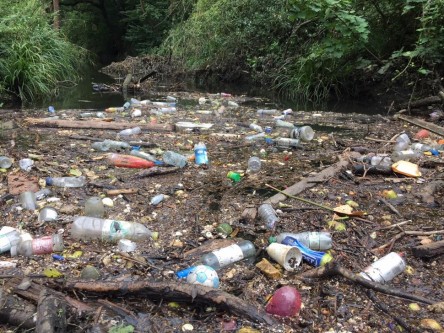
Additional planting - During August, staff from the South East Rivers Trust (SERT) spent two days planting on the berms that have formed in the Brook since the restoration work took place at the beginning of 2019. In total, some 5,000 native plants were planted along the section of brook between the REMPF Pavilion and the bottom of Robin Hood Ride.
Plants included:
• Yellow flag iris (1250)
• Branched bur-reed (1250)
• Brooklime (350)
• Greater pond sedge (500)
• Lesser pond sedge (500)
• Marsh Marigold (350)
• Common water-plantain (300)
• Water mint (500)
Himalayan balsam - During the summer it became very clear that the coverage of Himalayan balsam along the edge of the Wimbledon Common section of the Beverley Brook had significantly increased since last year.
Himalayan balsam is a non-native invasive plant species which is listed on Schedule 9 of the Wildlife and Countryside Act 1981 and it is an offence to plant or allow this species to grow in the wild. Growing rapidly, Himalayan balsam can reach a height of between two and three metres in one season, spreading quickly and smothering other vegetation beneath it. Mainly affecting wetland areas such as river banks, each plant can produce up to 800 seeds which are dropped or fired into the watercourse resulting in the contamination of land downstream.
As a result, towards the end of June, all Himalayan balsam was manually removed from the edge of the brook and moved away from the watercourse where it will naturally decompose. Satisfied that every visible piece of Himalayan balsam had been removed, staff were frustrated to discover that by the middle of the following month large clumps had once again appeared along different sections of the Brook. These plants have also been removed but we remain vigilant for any further plants that may have sprung up since.
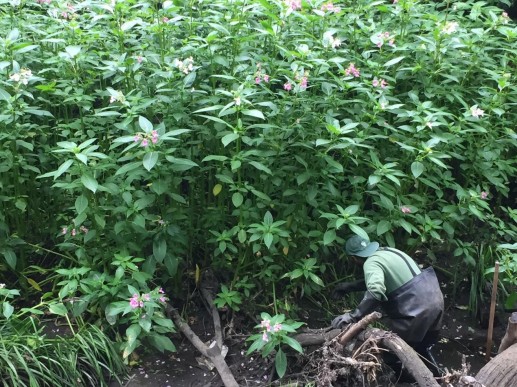
Grassland Management on the Commons
Acid grassland - As part of the Commons current Countryside Stewardship agreement with Natural England, vegetation on three areas of open grassland around the Commons is cut, baled and removed on an annual basis. These areas are The Plain, the area immediately south of Tibbet’s Corner and a smaller meadow site located along the southern section of Centre Path.
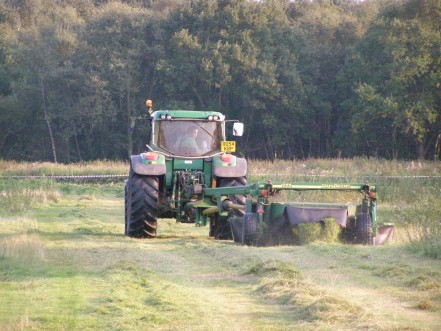
Using a tractor mounted mower that was purchased by WPCC at the beginning of 2020, other areas where vegetation has recently been cut and collected on the Commons have included the area of grassland opposite the Oasis Academy on Putney Lower Common, grassland close to the Southern Pound on Wimbledon Common, a small meadow opposite Crossroads Cottage on Putney Heath and a small area near Roehampton War Memorial. It is anticipated that by carrying out a regular programme of cut and collect around these areas, in time all of the sites will be eligible for inclusion in future Countryside Stewardship agreements.
Heathland Management - Over the past few months, the main heathland operations that have been carried out on the Commons have been Bracken bruising across all heathland areas and additional cut and collect work using the Commons’ own machinery. Concentrating on two areas of heathland on Wimbledon Common where heather is struggling to regenerate, the Commons’ Maintenance Team spent two days carrying out this work, with further work planned as soon as time allows.
As we approach the autumn period, further heathland operations will be carried out by the Maintenance Team on areas of heathland near Somerset Ride and along the northern section Ladies Mile.
Putney Lower Common Hedgehogs
As part of the ongoing Zoological Society London (ZSL) Hedgehog survey of the Barnes area, 11 camera traps were positioned at various locations around Putney Lower Common during August 2020. This will be the third year that Putney Lower Common has been included in this project and results will be made available as soon as possible.
In addition to the ZSL project, the local SW15 Hedgehog group also carried out a night time Hedgehog survey on Putney Lower Common during August. Involving a very small group of members, the first survey carried out by this group discovered two healthy Hedgehogs around different areas of the Common and the second survey night is planned towards the end of September 2020.
Stag beetles
Wimbledon Common is designated a Special Area of Conservation because it provides an outstanding habitat for Stag beetles. Throughout the summer, notices have been on display asking visitors to submit any sightings they may have made of Stag beetles on the Commons or in the surrounding area. By the end of July 2020, we had received 47 Stag beetle reports, 19 of which had been made on the Commons.
Volunteering on the Commons
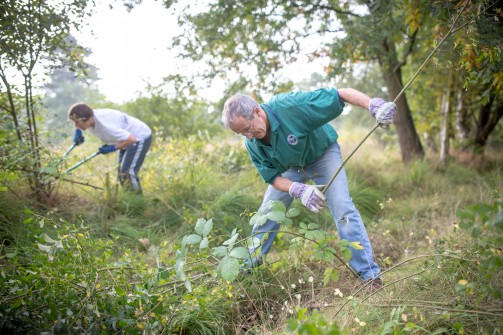
As a result of COVID-19 and the need to ensure adequate social distancing, organised volunteering on the Commons has largely been put on hold since March. The impact of this on the Heathland in particular has been significant and without the regular Scrub-bashing volunteers, the scrub has started to take a hold very quickly. We are currently reviewing the situation and, with luck and a prevailing wind, we hope to reinstate the regular Scrub-bashing sessions very soon.
We have continued to receive a great deal of support from many people who have been involved with litter picking on the Commons and our volunteer wildlife recorders have also continued to provide regular reports about many aspects of the flora and fauna that can be found on the Commons.
Duke of Edinburgh students have also started to return and we have recently had one teenager complete 52 hours of volunteering with us as part of his Gold Duke of Edinburgh Award programme. Although most of his volunteering involved litter picking, it has been very rewarding to see him complete the volunteering sections of his Bronze, Silver and Gold levels on the Commons.
